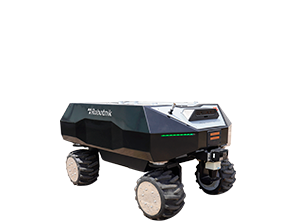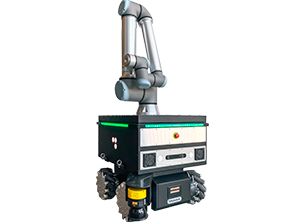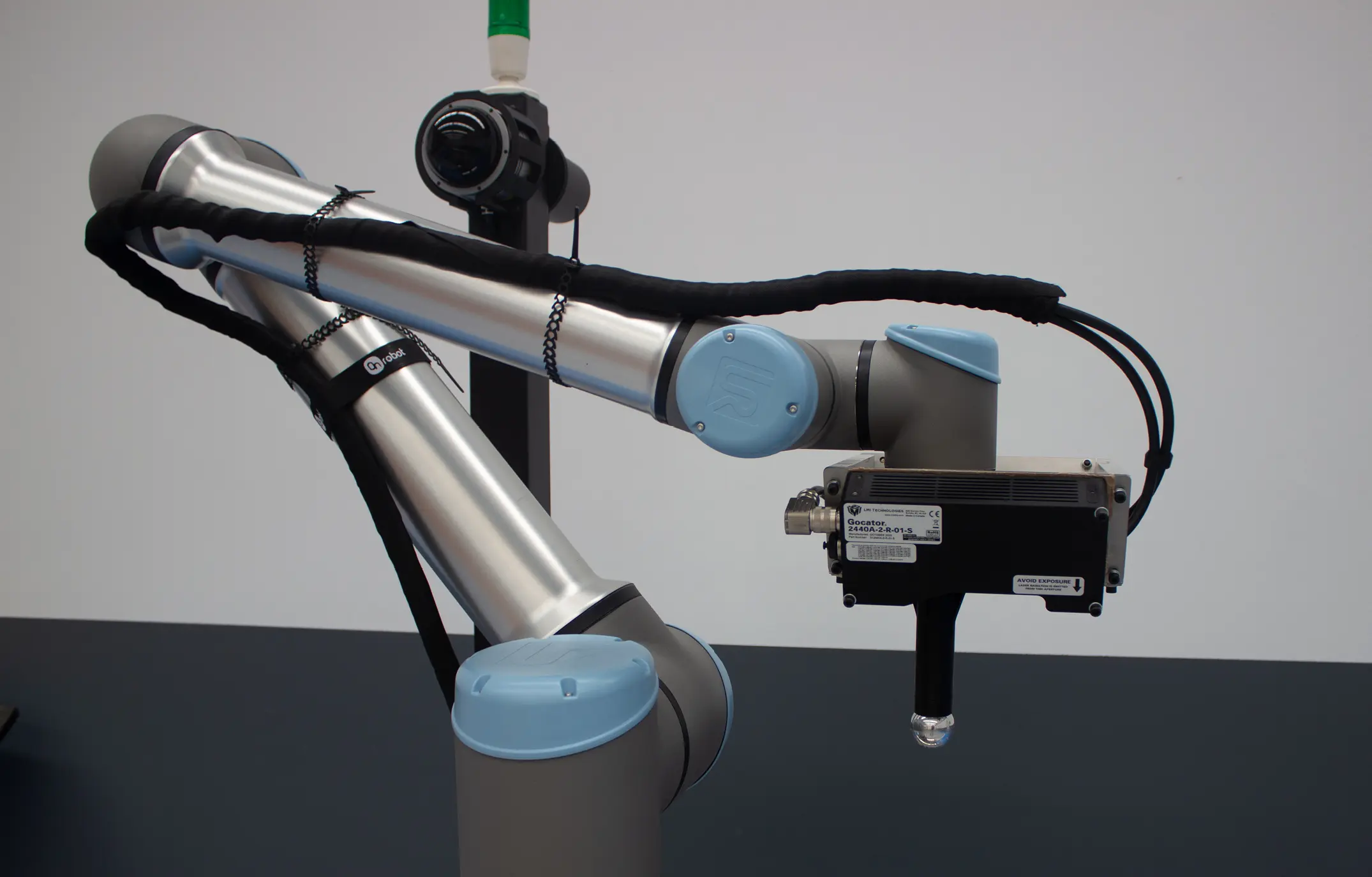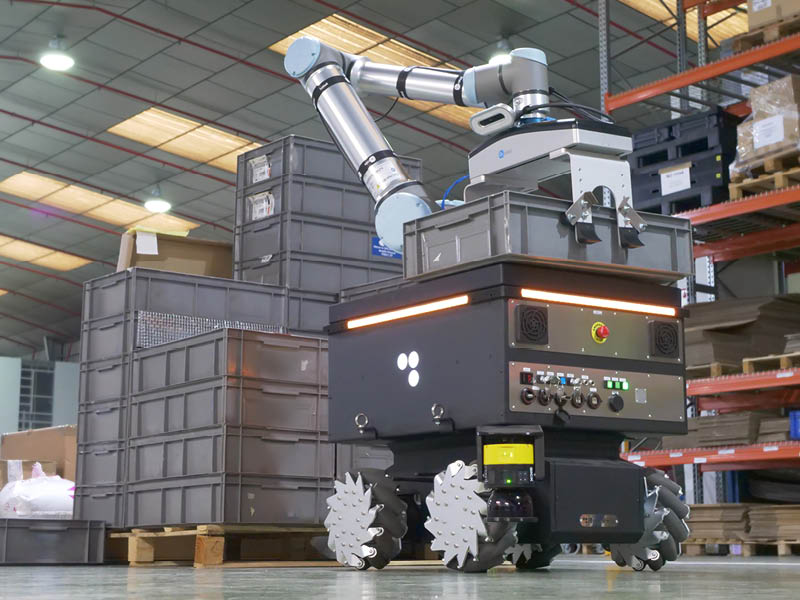Robotics in the aerospace industry has evolved beyond its traditional use in sectors such as automotive or electronics, adapting to the specific demands of manufacturing high-precision aeronautical components. These robots not only handle large-sized parts but also must be capable of working with complex materials, such as lightweight alloys or advanced composites, which require specialized manufacturing techniques. Moreover, automation in this sector not only addresses the need for efficiency but also meets rigorous quality standards. Mobile robots are essential for ensuring repeatability in processes that must comply with strict certifications, where traceability and precision are crucial for the safety and performance of aircraft.
The use of mobile robots in the aerospace sector optimizes both production and compliance with the highest standards of reliability and quality in the industry.
Through a successful robotics case in the aerospace industry, focusing on a recent implementation in an aerospacial plant, we explore how mobile robots are used for dimensional inspections, the benefits of using AMRs (Autonomous Mobile Robots) in aerospace, and the potential of robotics in this field.
WHAT TASKS DOES A MOBILE ROBOT PERFORM IN THE AEROSPACE SECTOR?
The aerospace sector presents challenges where precision, regulatory compliance, and safety are essential.
In this context, the adoption of mobile robotics in the aerospace industry goes far beyond logistics. These solutions are expected to support complex, high-value operations such as dimensional inspections, surface treatments, or structural assemblies.
Here are some tasks that mobile robots can perform in the aerospace industry:
1. Automated Dimensional Inspection
Mobile robots equipped with advanced measurement sensors can perform dimensional inspections of aircraft components with high precision. A prime example is the RB-KAIROS+ mobile manipulator robot at this aerospace manufacturer, which performs dimensional inspection of HTP (Horizontal Tail Plane) skins in aircraft components.
This task ensures that parts meet the tolerances required by aerospace regulations and allows full process traceability through automatic report generation.
2. Surface treatment application
Some mobile manipulator robots are capable of performing common tasks in the aerospace industry, such as sanding, polishing, or painting structural parts. This reduces worker exposure to potentially toxic or hazardous environments and improves the quality and consistency of surface finishes.
3. Component handling and assembly
By combining mobility with collaborative robotic arms, these systems can handle and assemble large or geometrically complex parts. This streamlines critical processes on assembly lines, minimizes human error, and optimizes production.
4. Visual inspection and defect detection
Equipped with cameras and machine vision systems, mobile robots can perform visual inspections to identify cracks, defects, or irregularities in parts. This enables early fault detection and reduces costs from production errors.
5. Autonomous transportation in industrial environments
Within the aerospace industry, AMRs can transport materials, tools, or parts between workstations, optimizing internal logistics flow in large-scale manufacturing plants. They also improve safety by reducing manual vehicle traffic in work areas.
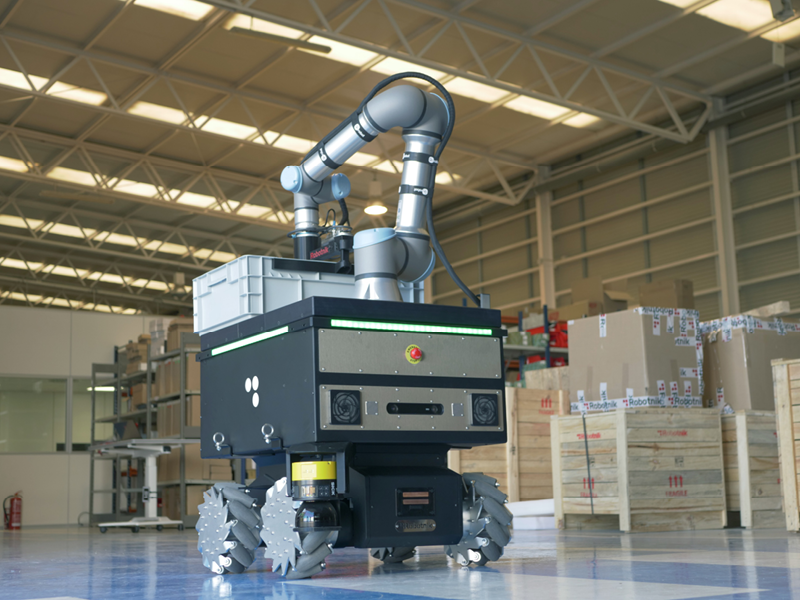
SUCCESS STORIES OF MOBILE ROBOTS IN THE AEROSPACE INDUSTRY
The implementation of the RB-KAIROS+ Autonomous Mobile Manipulator at the aerospacial plant is an example of robotics in the aerospace industry taking on increasingly complex tasks. This lightweight, mobile collaborative robot plays a key role in inspecting HTP components of various aircraft models.
The RB-KAIROS+ has been integrated into the quality inspection process to automate tasks previously performed manually:
- Measurements of stringers
- Measurements of flanges
- Thickness measurements in different areas of the HTP skins
This work is now optimized thanks to the RB-KAIROS+, which automates the measurement process, providing repeatability and robustness. The robot navigates autonomously around the structures, taking contactless measurements according to predefined plans. The system requires no floor markings or modifications to the facilities, as it localizes itself using 2D and 3D scanning of the environment and positions itself precisely using a contact probe, enabling a smooth transition between manual and robotic tasks.
HOW A MOBILE ROBOT WORKS IN THE AEROSPACE INDUSTRY
Adaptability and autonomy are two qualities that make the RB-KAIROS+ an ideal mobile robot for the aerospace manufacturing environment. It integrates advanced technologies that enable fully autonomous dimensional inspections without compromising quality or safety. Here’s how a mobile robot operates in the aerospace industry, from navigation to data integration into the plant digital systems:
- Autonomous Navigation Without Floor Markings: Thanks to 2D and 3D scanning systems, the RB-KAIROS+ orients itself without predefined routes, codes, or physical guides. This gives it great flexibility to move freely around the plant and simplifies deployment, as no prior modifications to the plant are needed.
- Precision Referencing via Probe: Before taking any measurement, the robot uses a contact probe to precisely identify the reference point on the actual part.
- Smart Data Integration: All the data the robot scans is automatically captured and processed, then uploaded to the information systems -both locally and in the cloud- in the required format for traceability and later analysis.
BENEFITS OF USING AMRS IN THE AEROSPACE INDUSTRY
The implementation of the RB-KAIROS+ demonstrates that using AMRs in the aerospace industry can generate tangible and significant benefits. These are the main advantages of this success story:
1. Process Robustness and Repeatability
Manual measurement is generally susceptible to variations and an increased risk of human error. Automating these tasks with the RB-KAIROS+ not only improves process reliability thanks to its high-precision sensors, but also ensures greater operational consistency by working continuously with minimal interruptions.
2. Time and resource savings
With hundreds of measurements per part, manual inspection is time-consuming. The robot performs the same tasks faster and without fatigue, freeing personnel for higher value-added work.
3. Integration with no structural modifications
One of the main challenges of industrial automation is integrating into already established environments without costly modifications. The RB-KAIROS+ is specifically designed to operate under the same conditions as manual tasks, allowing implementation without needing to redesign the plant or make significant additional investments.
4. Safety and collaboration with operators
The RB-KAIROS+ is a collaborative robot capable of sharing the workspace with humans, without needing a restricted operational zone. It includes safety scanners that define a perimeter and halt operation if an intrusion is detected, whether by a worker or another physical object. Additionally, if its robotic arm is touched, it stops automatically, complying with collaborative safety regulations.
5. Data-driven quality control
One of the greatest benefits is the system’s ability to digitise inspections. It not only collects data but analyzes and integrates it into the information systems, enabling full traceability, automatic report generation, and, in the future, predictive maintenance and deviation analysis.
THE FUTURE OF MOBILE ROBOTS IN THE AEROSPACE INDUSTRY
Big aerospace companies have been integrating mobile robotics into their smart automation processes for years, as a key component in transforming aerospace manufacturing. In the coming years, mobile robots are expected to play an increasingly important role in tasks such as inspection, assembly, and predictive maintenance.
The incorporation of advanced technologies like artificial intelligence and machine learning will allow these robots not only to detect errors but also to diagnose them, anticipate failures, and dynamically optimize their routes and processes based on the specific characteristics of each part.
An example of this trend is the implementation of the RB-KAIROS+ at the aircraft manufacturer plant, one of Robotnik’s most notable success stories in the aerospace sector, transforming a traditional process into a more automated, safe, and traceable operation.
FAQs about robotics in the aerospace industry
Mobile robots perform high-precision tasks like dimensional inspections, surface treatments, and component assembly, ensuring quality and safety.
They improve repeatability, save time, require no plant redesigns, and enhance safety through human-robot collaboration.
They use 2D/3D scanning systems to move autonomously without floor markings or physical guides.
